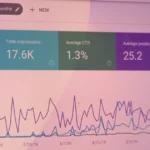Without previous knowledge, selecting the best eCommerce store or the best website platform for your business is a challenging task.
This blog lays out all the information on the table regarding the best e-commerce platforms Webflow Vs. Shopify for you.
We will explore all aspects suggested by expert website developers related to Webflow and Shopify because both offer whatever you need to start a professional online business.
E-Commerce, without a doubt, has been a hugely expanding business for decades. eCommerce has been steadily increasing in value, from $1.3 trillion in 2014 to $3.5 trillion in 2019. According to estimates, eCommerce is expected to be a $6.5 trillion business by 2023.
What Are the Similarities Between Shopify vs Webflow?
Shopify and Webflow. Both systems provide a streamlined method for managing, growing, and designing websites. This implies that you can conveniently manage your overall eCommerce website from a single dashboard. Let’s have a look at some similarities between them.
- No-code strategy
- Free and premium templates
- Blogging option
- Marketing Campaign Strategy
- Pricing plan
- Shipping rules
1) No-Code Strategy
Webflow and Shopify are two e-commerce platforms that work on the No-Code strategy.
2) Free and Premium Templates
Both systems have a library of free and premium templates. These are great for streamlining the site design procedure and don’t require any code.
3) Blogging Option
Both provide powerful blogging platforms. Webflow and Shopify each offer many instructional resources in the form of blog writings, video lessons, and manuals. There’s a lot to assist you in fine-tuning your abilities.
4) Marketing Campaign Strategy
Both Shopify and Webflow provide marketing options, such as rudimentary email campaigns and the ability to create promotional codes.
5) Pricing Plan
The introductory price for the basic plan on Shopify and Webflow is USD 29 per month. Webflow has slightly lower prices for intermediate to advanced programs than Shopify.
6) Shipping Rules
You may establish customized rules for shipping costs, such as free shipping, for both cases, Shopify and Webflow.
What Are the Main Differences Between Shopify and Webflow?
Although both platforms offer the optimum performance for an eCommerce website, there are still some variations between them that may cause you to pick one over the other based on your requirements and budget. Stay connected to know the difference.
1. Purpose of Website
Webflow was created to be used for general website creation, while eCommerce capability was added subsequently. On the other hand, Shopify has always been primarily an eCommerce platform.
2. Marketing Integrations
Shopify has more complex functionality and a more extensive selection of third-party apps than Webflow. For example, you can measure the effectiveness of your marketing activities and allow users to make profiles on your website, but Webflow does not. It is always essential to focus the ease of use.
3. Account Development
Customers can make accounts on their store’s website using Shopify. However, with Webflow, you can’t do this.
4. POS (Point-of-Sale)
POS technology can be integrated with Shopify. It’s not a functionality of Webflow right now.

5. Free Plan Option
Webflow is a free plan that lets you get acquainted with the system’s main capabilities and see if you like them. However, you’ll need to upgrade to a premium subscription before your website can go online.
Shopify only offers a 14-day free-of-cost trial but no free plan. After that, you’ll have to pay for one of their premium packages to keep utilizing their quality service.
6. Payment Options
Shopify has a significantly more extensive selection of payment channels than Webflow.
7. Design and User Experience
Webflow provides web designers with greater imaginative freedom than Shopify. For instance, you can handle your business while on the road through Shopify’s mobile app due to its designs and good user experience. Webflow, on the other hand, does not provide anything equivalent.
Webflow vs. Shopify: What’s Easier to Use?
1) Webflow
It is the most straightforward website builder for modern web designers. The site builder primarily targets professional web designers compared to other website development platforms. This implies that the platform isn’t easily mastered and explorable at first.
The system has a simple signup procedure. However, it comes with a confusing dashboard and controls, which can seem overcrowded in features. Unless you already have web development or programming skills, you will need a little more time to understand this service’s user interfaces and structure.
2) Shopify
Shopify’s store management capabilities include establishing and monitoring client profiles to know more about their buying patterns, contact information, and order records. Users may register accounts or profiles on your website to make recurring purchases easier. Handling refunds is a breeze with Shopify.
Finally, Shopify’s mobile application allows you to control your business while on the go. You can process orders, communicate with clients, and maintain your inventory.
Webflow vs. Shopify: Who Provides Better Customer Support?
Customer service is not only crucial in physical stores but is also vital for online businesses.
It must occur promptly as a problem and should be fixed as soon as possible. If not, then your business will likely lose revenue and prospective customers. Let’s discuss the platform that provides the most effective customer support services.

1) Webflow
You can access Webflow’s support page using the “Help” button. You will find different ways to solve a question. They can be: “Please contact us through the Webflow Community Forum.”
Webflow includes an email option where you can enter your information into the reporting system.
The helpdesk appears to be accessible Monday to Friday between 6 a.m. to 6 p.m. PST. You can contact us at any time for a timely response.
2) Shopify
Shopify is recognized for its electronic help, with many online documentation and videos. For example, there’s an e-commerce support center, a blog, manuals, boards, and podcasts.
Shopify offers customer service by email, online chat, and contact 24/7. You can contact Shopify at your ease. They also provide different documents for your Shopify development.
Who Provides a Better Design and Template Editing–Webflow vs. Shopify?
Webflow and Shopify offer a wide variety of customization options for customers. Web developers abound with tools and features necessary for web store development and further management. Exceptional performances differentiate the platforms.
However, comparing their main features remains necessary to define a leading competitor. Continue reading this comparison.
1. Template Library
Webflow
The templates library is full of creative and innovative ideas. Webflow certainly can create something entirely new. The built-in visual editor makes it easy to edit the look of any site you wish.
When you own specific types of products, you can apply these themes to your stores and make your customers feel exclusive. Webflow also consists of several different template options. It provides over 2000 templates for websites, businesses, and portfolios.
Shopify
Over 70 professionally designed website templates, including nine free, are available on Shopify.
Although Webflow offers more themes, they are more expensive and less user-friendly than Shopify.
“The ultimate purpose of the SDLC 5 Phases is to improve the regularity, effectiveness, and overall quality of information systems or software development methods. Read more: What are SDLC’s five phases.“
2. Template Editing
Webflow
Webflow templates are available in both commercial and free versions with a good user experience. However, the quantity of free themes is fewer than the number of premium themes. Users may pick from roughly 30 basic free designs, while premium templates range in price from $24 to $79 per theme. Experts developers or designers, on the other hand, point out that there isn’t much of a distinction between premium and conventional designs.
For critical website pages, such as the homepage, contacting, reviews, services/products, and so on, the program enables you to choose from a variety of template variants.
Webflow also has a preview feature, which allows you to examine a template’s specifics before you choose it. Furthermore, you can select an entirely fresh canvas on which to develop a unique design based on the niche in which your company operates.
Shopify
Users can employ CSS/HTML editing abilities to increase template quality, although a coding specialist should only do this to write clean code. Regarding premium themes, Shopify has over 60 to choose from. They’re all professional, pleasing to the eye, and adaptable.
All templates are organized into sections depending on the themes they cover for user convenience. Shopify’s layouts are responsive, but they come at a premium package. Keep it in mind when you make your final decision.
3. Third-Party Integrations and Special Features
Webflow
Webflow provides different integration of functions that allow for a wide range of web design choices. Compared to CMS, the website builder is much easier to use and more reliable than most other Webflow alternatives.
The platform is initially oriented to Web designers’ requirements, providing extensive customization tools and an HTML/CSS Editor. Webflow allows for the integration of a custom HTML code into your site’s headers or footnotes.
Shopify
it enables integration with third-party services, which may significantly improve the speed of an online store. The solution allows for seamless integration with Xero, Quickbooks, and other high-quality accountancy systems, including essential third-party services.
Additional widgets, blogs, a variety of trading systems, high-end reporting tools, and other features can also be integrated. The program includes a skilled commercial App Store where users can browse and install third-party panels and add-ons, each free and premium.
“Software Quality Assurance Methodologies may help you save money, time, and effort.” To be familiar with a few essential procedures and techniques. Read More: What is QUALITY ASSURANCE METHODOLOGY?
Who Provides Better E-Commerce Services–Webflow vs. Shopify?
1) Webflow
Webflow offers a fully integrated eCommerce system that is an essential feature of a system. It makes establishing and managing small to medium-sized websites more efficient. Hypermarkets are often complicated due to the limitations in the eCommerce functionality of the software. This may be understandable since the website building software does not rely exclusively on e-commerce development.
Webflow has recently made it so easy to create special promotions and coupons to improve the shopping experience for users. Customers’ data may now be collected and saved for advertising and webshop marketing reasons.
You’ll be able to construct Lightbox displays using Webflow, employing whatever combination of movies and photographs you like. There is also the possibility of integrating the Lottie systems and AfterEffects.
This could help use platform interactions to manage the replaying of vector animation. Compared to specialized rivals’ websites, this technique assures that yours will appear more attractive, interactive, and sophisticated.

2) Shopify
Since it is the market leader in eCommerce website design, its extracted features are focused solely on web store building. The platform enables the creation of a wide range of eCommerce projects, from primary and medium-sized websites to massive online megastores with thousands of goods in stock.
Users may construct excellent product galleries and implement loyalty programs, discounts, and special offers whenever working on online shop creation using Shopify. The program also allows you to choose and apply high-end advertising and online store promotion, including product managing tools to provide your customers with the most pleasing customer experience practically possible.
The system is also noted for its multichannel collaboration feature, which allows you to link the accounts with the below-mentioned platforms to potentially increase your sales volume and boost your online store’s visibility:
- Amazon Marketplace
- eBay
- Instagram and other major channels
Other Features
Some notable features are SSL Certification, multilingual support, shop code introduction, delayed checkout recovery, fraud prevention, and extensive online shop administration choices. Such as
- Customer profiles
- Customer accounts
- Groups
- Dropshipping possibilities
- Email templates
- Fast order fulfillment
Shopify’s marketing tools also set it apart from the competition:
- POS (Point-of-Sale) software availability
- Buy One – Get One discounts
- Shopify Ping mobile app
- Dynamic checkout
- Shopify Tap
- Sophisticated retail capabilities
- Chip Reader
- UPS Shopify Shipping function
- Online shop analytics and many more are among the most popular.
“Do you know?” The primary distinction between software and a program is that software is a collection of programs, whereas a program is a set of instructions. Read More: What is the difference between a computer program and software?”.
Price Comparison Between Webflow vs. Shopify
Pricing is essential when deciding on an eCommerce platform. So which platform is good concerning its price along with performance? Let’s look:
Webflow
There is an entirely free, never-expiring plan available on Webflow. However, it is relatively limited following the design flexibility and project capability. A free version does not enable code exportation or banner elimination and only permits the creation of websites on the network subdomain.
Webflow’s paid registrations are separated into two big groups:
- Site
- Account plans
Each of which is further segmented into smaller subscription groups that are, correspondingly, divided into more detailed groups of subscriptions:
- Website
- eCommerce
- Individual
- Team plans
- Shopify
Shopify
It has four-priced memberships depending on the volume and complexity of your web business. Users can subscribe to:
- Lite
- Basic Shopify
- Shopify
- Advanced Shopify
Each one has its features necessary to finish a specific job. Now have a look at them.
1) Shopify Lite:
($8.99/mo) is an excellent option for people who wish to initiate selling on social media or link a current website to the Shopify store. The membership includes an infinite amount of items to sell, 69+ payment methods, worldwide tax and currency support options, revenue tracking, and a “Purchase” button, among other things.
2) Basic Shopify:
($28.99/mo) — suitable for a small digital store, with a free SSL certificate, webpage, blog connectivity, and so on.
3) Shopify:
($79/mo)–This is a good alternative for a developing social web business; the package includes professional monitoring, reward points, and other features.
4) Advanced Shopify:
($299/mo) — this plan includes a suite of professional capabilities for growing digital businesses, including a professional document builder, real-time carrier delivery, and other benefits.

Who Is Better in SEO Marketing – Webflow vs. Shopify?
Anyone with a fundamental understanding of Internet marketing would recognize the term SEO (search engine optimization). SEO is the only internet marketing technique that may pay you in the long run when done effectively. As a result, SEO marketing is becoming increasingly vital.
Webflow
Webflow’s plans all contain comprehensive SEO controls, ensuring that all sites developed with it are search engine friendly Webflow also offers dynamic embeds that allow customers to build search-friendly meta titles and descriptions automatically.
Shopify
Shopify has the advantage of automatically generating page titles and meta descriptions.
Furthermore, Shopify speaks to the fundamental aspects of SEO by their proper names. This prevents technical words from being mixed up with terminology intended for other reasons.
Shipping Process–Webflow Vs. Shopify
The delivery method you choose for your online stores is critical to your company’s success.
1) Webflow
Webflow provides a shipping service that allows users to modify their areas, regulations, and tax options. You can use Webflow’s manual connections to generate shipping labels and other sophisticated features.
Webflow, compared to Shopify, only delivers basic shipping facilities, whereas Shopify gives extensive shipping capabilities.
2) Shopify Platform
Shopify’s shipping is flexible. They offer automatic shipping estimations and the ability to see actual shipping charges. They offer partnerships with shipping companies to assist customers in saving money on shipment.
Users may also generate shipping tags and execute orders without third-party software.
“Website maintenance services assist you in naturally ranking better on search engine results pages. Read More: What is a Website maintenance services list?”
Business Analytics Comparison–Webflow vs. Shopify
Data, as well as math, are used in quantitative analytics to resolve business concerns. It’s the key to growing your company.
1) Webflow
It does not have its analytics software. However, they allow customers to easily connect to third-party analytics systems such as Google Analytics to gain insight.
2) Shopify
It delivers a summary dashboard with analytics-based business insights. This dashboard shows you statistics like revenue, popular goods, landing sites or referrers, regular customer rates, and more. Furthermore, Shopify users may quickly develop their bespoke reports.
Pre-defined reports are also available in the Advanced Shopify and Shopify Plus subscriptions.
Which Builder Makes Migrating Easier–Webflow Vs. Shopify?
We alter our thoughts or desire to attempt something new occasionally. The same is true for website builders. Either you’ve exceeded your existing platform, or it’s simply not the ideal fit for your existing website. However, how simple is it to move your old website to a newer CMS? Let’s take a look:
1) Webflow
The process of switching your shop to Webflow is a little complicated. You’ll be required to utilize CSV files, the same as Shopify, and you’ll simply be allowed to move your items. You’ll have to redesign your store’s layout in the Webflow editors.
2) Shopify
If you’re converting your shop to Shopify, you have a few options for transferring your data. To begin with, you may do it yourself by cutting and pasting your material or submitting it as a CSV file. However, there are certain limits. You won’t be able to replicate your full page; only your client information and items will be copied.
However, you may use an app like Store Importer to accomplish that or pay a Shopify Expert to do everything for you. However, be aware that this last alternative is not inexpensive.
“Read More: How is an application developer different from a software developer?”
Which Is Better Among Webflow vs. Shopify?
Choosing between Webflow vs. Shopify is challenging.
“Both platforms (Webflow and Shopify) provide a one-stop-shop for website design, administration, and development with certain dissimilarities.”
You’ll be able to manage your complete eCommerce website from a single dashboard. But still, the question remains, which to choose between Webflow vs. Shopify?
1) Shopify
With Shopify’s all-in-one e-commerce system, you can quickly build your ideal company and begin selling to clients wherever they can be. It uses templates to enable you to organize the structure of your store’s presentation. Shopify is an easy-to-use website builder that has gained widespread acceptance from millions around the world.
The software development team regularly updates it for web development trends.
2) Webflow
Webflow helps you develop an excellent and distinctive e-commerce site with nearly everything, including animation, features, and an entirely responsive layout. It is a free online website builder with a vast feature set for a web application.
Webflow provides an advanced cloud site development tool targeting the required levels of professional web designers and agencies. The system, therefore, requires an intelligent design approach to web development.

12. Features To Consider Before Choosing an Ecommerce Platform
Each eCommerce platform comes with a distinct set of features and functionalities. However, you must ensure that your eCommerce system provides the following capabilities for your business.
- Robust catalog
- Website personalization
- Flexible pricing
- Flexible shipping
- Google Merchant integration
- eCommerce analytics
- Facebook integration
- Automatic tax and account calculation
- Customer Review system
- Multiple payment gateways
- Headless commerce
- Single customer view
Webflow vs. Shopify—Pros and Cons
Before we wrap things off, here’s a rundown of Webflow and Shopify’s advantages and disadvantages.
Pros of Webflow
- The visual editor gives website creation a whole new perspective
- Webflow offers speedy hosting as well as a vigorous editor that reacts swiftly
- There is no necessity to know how to code
- There are several internet resources available to users
- There’s a free version that lets you build your webpage to its most total capacity before launching it
Cons of Webflow
- Until you may start your website, you must first pay
- The user experience of Webflow might be frightening to the uninformed
- Webflow does not have a point-of-sale integration
- It usually does not support a mobile app
- Some of the functionalities are still in their infancy. Despite Webflow’s efforts to enhance many of these, it currently only provides minimal email marketing campaigns, inventory control, and shop management functionality.
- Webflow’s customer service options are restricted to email and live chat.
Pros of Shopify
- Your shop can have an endless number of goods
- You don’t need to know how to code
- Shopify is well-known for its excellent customer support
- It boasts one of the most comprehensive selected features of any eCommerce builder
- You may connect your POS to enable smooth online as well as offline sales
- Shopify offers an excellent customer service team that is available 24 hours a day, seven days a week, with phone assistance included
Cons of Shopify
- When it uses third-party online payments, it takes a fee
- Shopify may grow pricey if you require a lot of third-party apps
- Several of Shopify’s more advanced themes are relatively expensive (up to $180)
- Shopify has a higher learning slope than most of its competitors due to the abundance of options provided
- Although Shopify enables you to develop professional as well as modern businesses, its templates are less configurable than Webflow’s
Read More: How to Make An Uber-Like App?
When to Choose Shopify?
- If you’re searching for a professional eCommerce platform, You’ve got a big store or a complicated inventory.
- You want a simple builder that doesn’t require a lot of technical understanding.
- You need a lot of space to expand your business.
When to Choose Webflow?
- It is a good choice if you want to manage a small or medium-sized business.
- You’ve got a blog that’s at the core of your company.
- You own a design firm that creates websites for clients.
- Your main priorities are beautiful layouts and artistic control.
Website Editors and Customization Features- Shopify vs. Webflow?
Let us see if Webflow is comparable with Shopify for visual editing, pre-made templates for web design, and other web development tools, including hosting.
1) Structure
It’s an intuitive editor that allows for the placement of unstyled HTML components on a website. You can also create advanced features such as sliders, tabs, video backgrounds, or many others. You won’t need a whole new idea to design a website for free.
Webflow:
Webflow provides more than 100 free templates that are suitable to be used by any type of business or website. This can be customized using the WebFlow visual editor. Template costs range from $9 to $119 and cover many industry fields. You can also download themes from websites like ThemeForest or others.
Shopify:
On your Shopify admin panel, click on Online Store and then Themes. Find the theme you want to edit and click on the Customize theme button. Select the section that contains the content that you want to remove. In the Content section, select the range you want to remove.
2) Launch
Webflow:
Launching a website with Webflow is an easy-to-use and flexible hosting solution. Webflow can set up all kinds of web hosting services. Once we complete our website design, it’s time for the website. The point is downloading and installing the ZIP file for HTML, CSS, JavaScript, and other documents. From here, the developer or user can write code. Once you publish your site, you can quickly edit the content you want. Webflow enables you to edit content from your site without needing a back-end content management system.
Shopify:
Setting up a Shopify store is relatively straightforward. You can get them all done in less than an hour. You also have a 14-day free trial, so don’t worry if you think you messed up something. Shopify is a comprehensive and flexible platform to choose from.
3) Website Editors
Webflow provides visuals that make your visual personality stronger and is undoubtedly more intelligent than Shopify. Webflow provides professional Adobe-like designs that you can download directly from your browser.
Webflow allows developers to create their websites without constraints and offers the freedom and expertise to develop. It’s a massive tool for designers who want a big vision on their website.
Summary of Webflow vs. Shopify?
The most refined web development platform should be chosen based on the goal you want to achieve and the final result you want to achieve. This applies to the decision between Webflow and Shopify. The services are up and running and also have a lot to offer. The only significant contrast is between the systems’ primary emphasis and their particular specialization.
Webflow:
Webflow is quite helpful and has tons of valuable features. The website design tool minimizes specialized processes such as Photoshop before launch. You can also use classes to create customized CSS.
The design is easily accessible for beginners, but Shopify has gotten better in this respect. Webflow is an attractive option if you want an online e-commerce store and are experienced in developing it.
Shopify:
Shopify is a well-known eCommerce platform specializing in creating online businesses. The platform allows for extensive design customization and responsive templates, including eCommerce capabilities and tools, making it an excellent alternative for users of all types.
FAQs
Which has more effective safety and security measures in place?
Shopify and Webflow are both known for their speed and security. Because both Webflow and Shopify handle security carefully, it’s impossible to say if one is better than the other. For added peace of mind, they’re all PCI DSS certified and give SSL Security certificates and frequent backups.
Who has a more comprehensive set of eCommerce tools and features?
Shopify offers a far more comprehensive set of eCommerce features and functionality. Shopify is built exclusively for eCommerce. It ensures it comes with whatever you’ll need for any online business. Webflow has a decent eCommerce product, but it can’t compete because it isn’t a specialized selling network and only supports eCommerce as an element of its larger website-building package.




